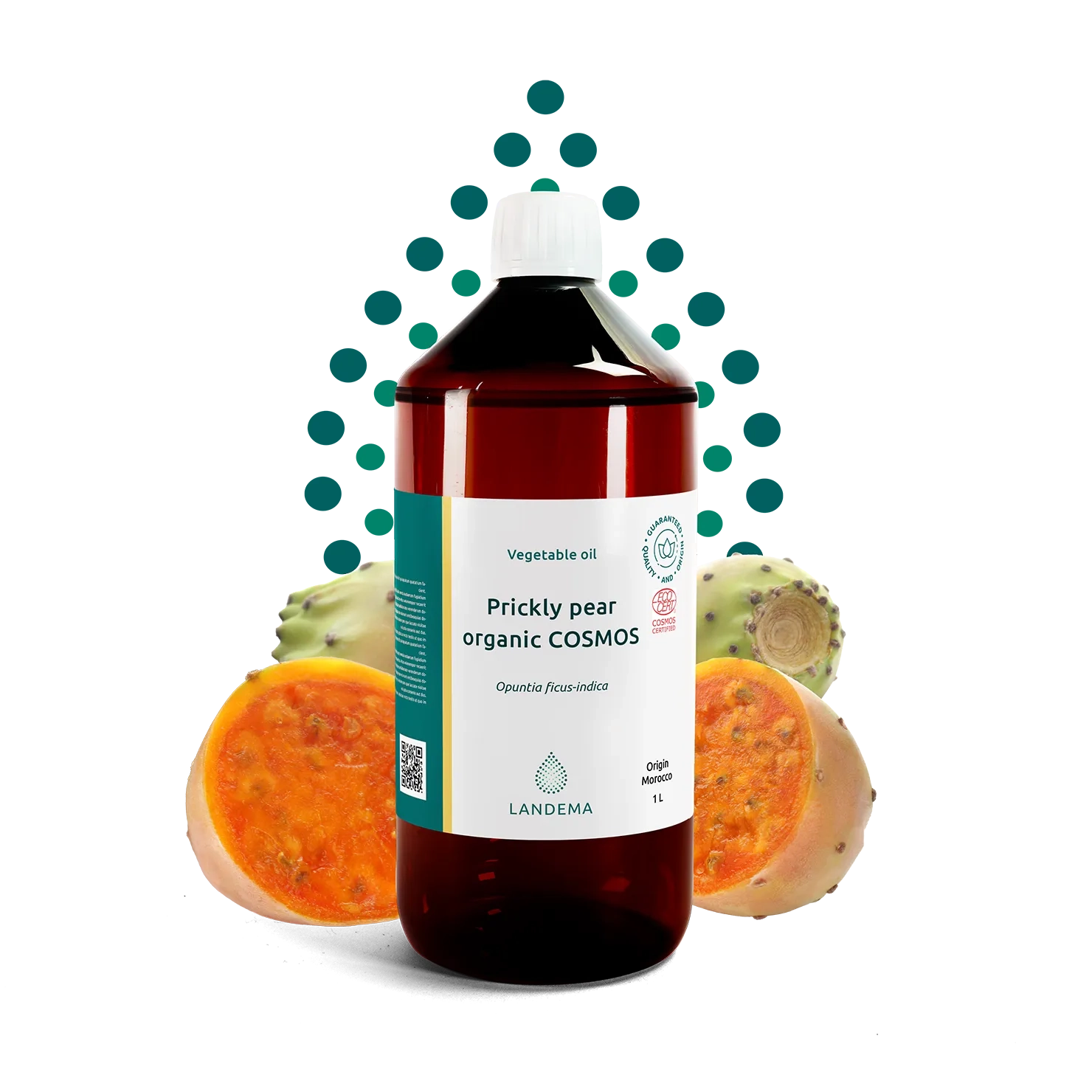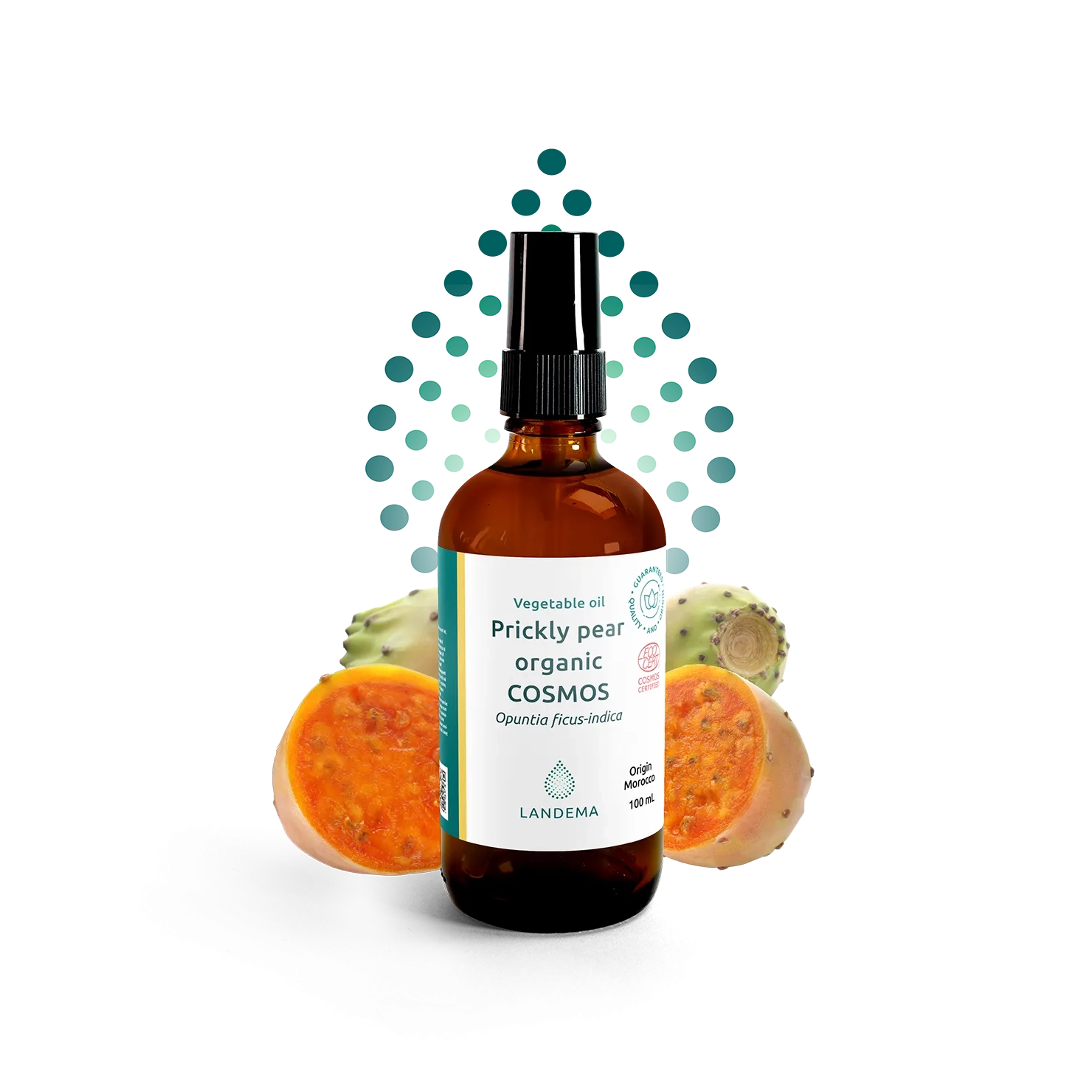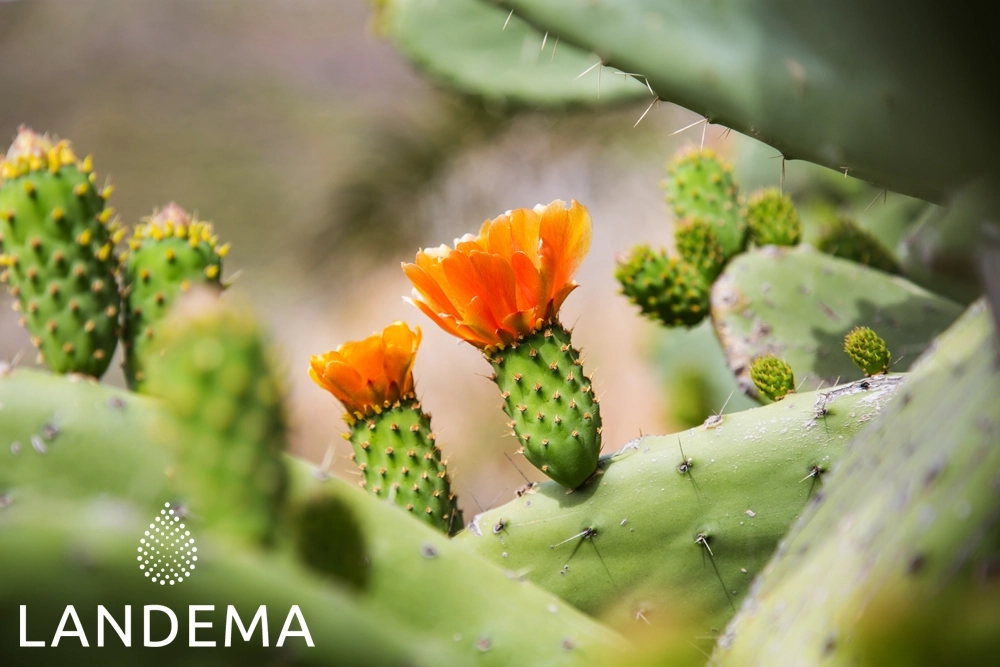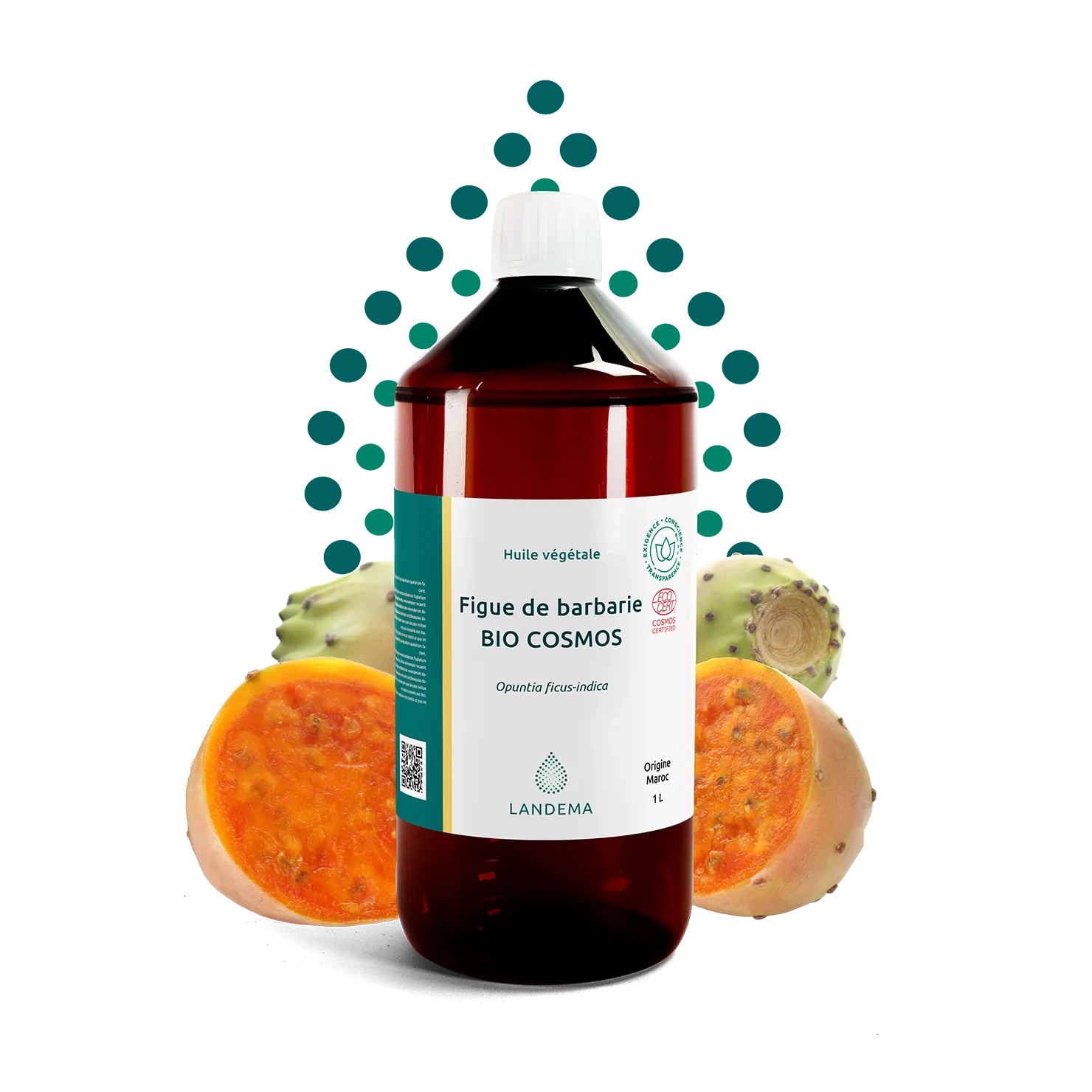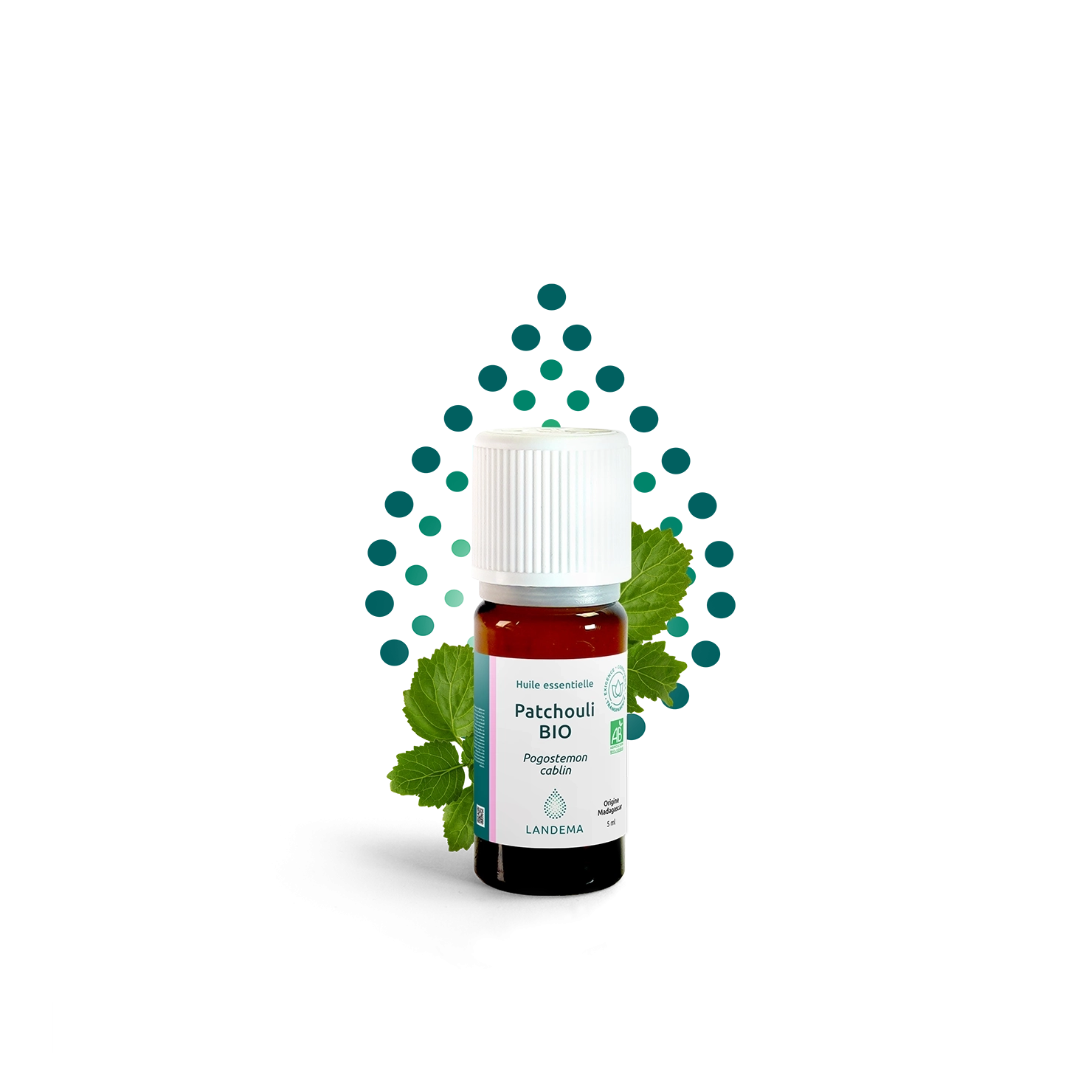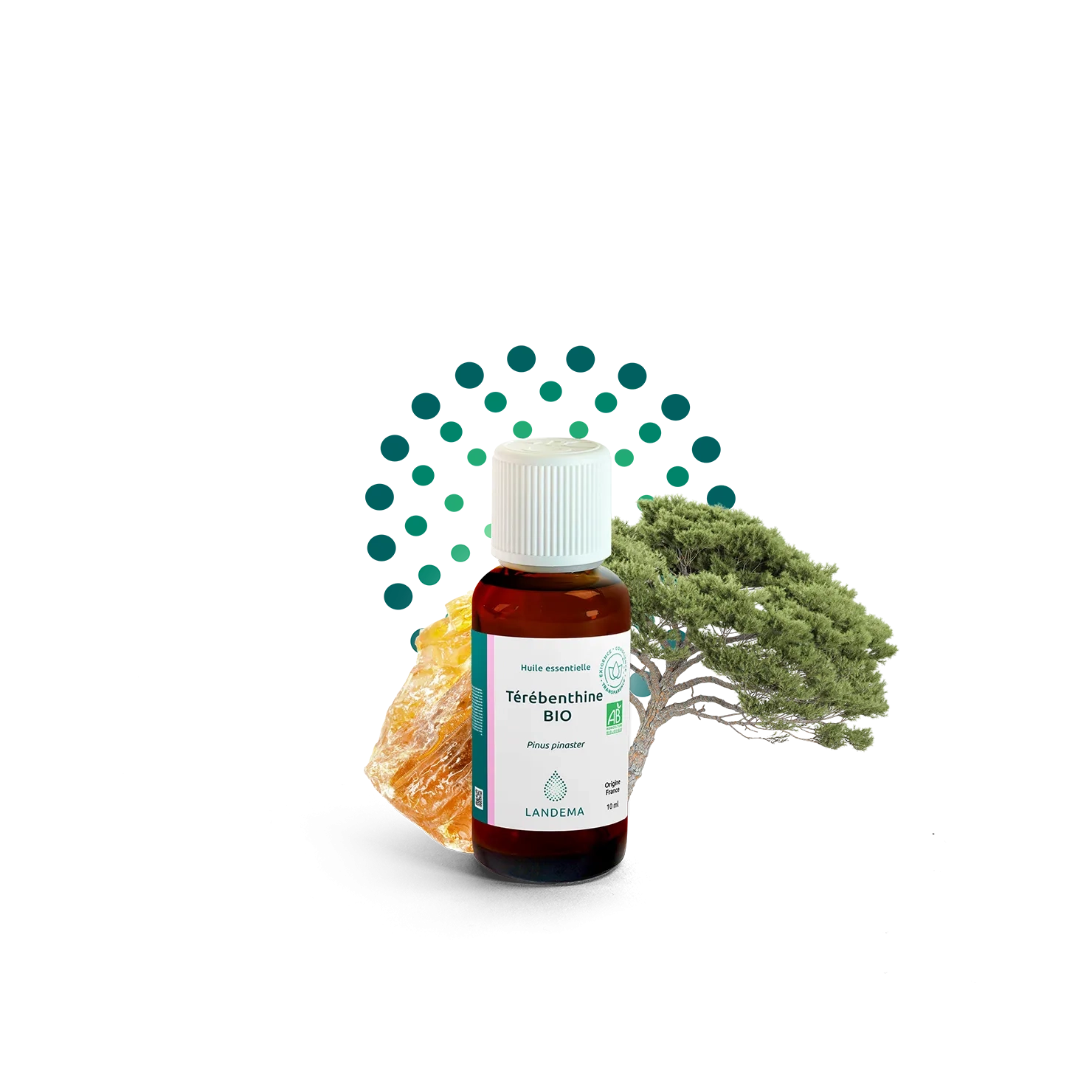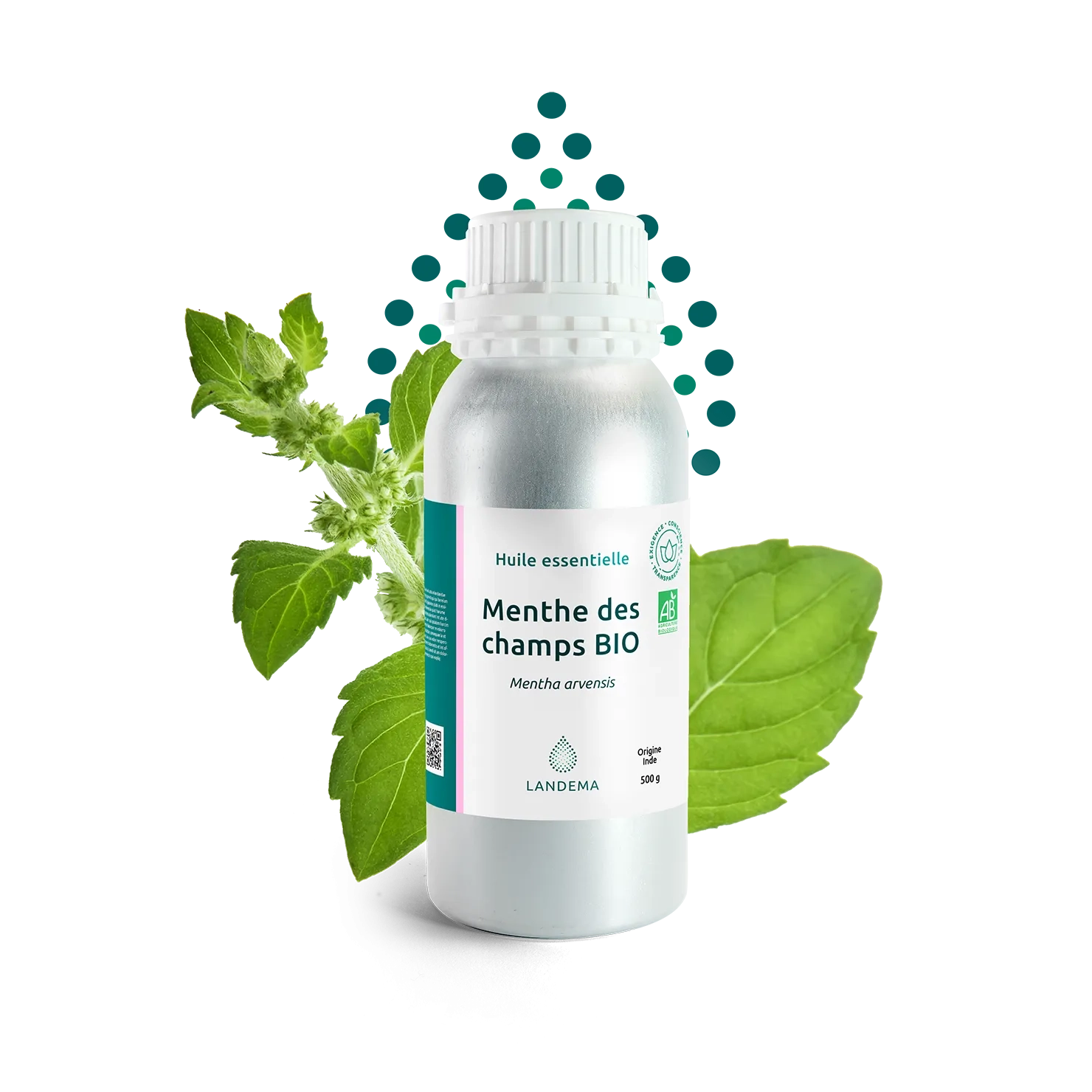Description
Prickly Pear Oil is extracted from the seeds of the Opuntia ficus-indica cactus fruit, primarily grown in Mediterranean regions and Mexico. This cactus is renowned for its hardiness and ability to thrive in poor soils. The fruits are harvested from late summer to autumn, after which the seeds are dried and pressed to extract the oil. This labor-intensive process yields a precious and concentrated oil.
This plant oil is distinguished by its high content of unsaturated fatty acids, mainly linoleic acid (60-70%) and oleic acid (9-26%). It is also rich in vitamin E (gamma-tocopherols) and sterols (beta-sitosterol, campesterol). These compounds provide the oil with antioxidant, soothing, and moisturizing properties, making it ideal for both skin and hair.
This oil is particularly favored in anti-aging treatments but is also excellent for very dry skin, dry hair, and after-sun care. It deeply nourishes the skin, enhances hydration, and helps restore skin’s flexibility and elasticity.
Prickly Pear Oil can be incorporated into formulations at concentrations ranging from 1% to 5%, depending on the type of product and desired texture. It can be used in creams, serums, hair oils, after-sun treatments, or even in moisturizing masks for the skin.
- Certifications : Organic certified by ECOCERT Greenlife according to Cosmos Standard available at http://cosmos.ecocert.com
- Landema Label : Engaged sourcing
- Country of manufacturing : MOROCCO
- Country of harvest : MOROCCO
- Part of the plant : Seed
- Composition : 100% pure and natural. Cold pressed.
- Olfactory notes : characteristic, mild, herbaceous
- Quality and origin guaranteed: botanically and biochemically identified, a certificate of analysis provided with each purchased product.
- Controlled and packaged in our workshops
Production
Harvest
The genus Opuntia encompasses around 1,500 species of cacti, primarily distributed in Africa, Mediterranean countries, the southwestern United States, northern Mexico, and other regions around the world. Notably, Opuntia is the only cactus genus native to the eastern coast of the United States. It is also found in Malta, where it is so widespread that it covers much of the island.
These cacti are among the most cold-resistant. They are the only plains cacti capable of growing as far west and south as Canada. A particular subspecies, Opuntia fragilis var. fragilis, has been observed in the southwestern part of British Columbia, along the Beatton River, near Cecil Lake.
The cultivation of Opuntia is very simple. They only need to be planted and left to grow with minimal maintenance: no fertilizing or watering required. They adapt perfectly to poor soils, unsuitable for growing corn or other livestock forage. After one to two years, the pads (or cladodes) can be harvested, as well as the fruits.
Prickly pears, members of the Opuntia genus, are recognized by their flat, rounded pads covered with two types of spines: large, rigid, smooth spines, and small, fine spines called glochids, which are easily detached. These cacti often form dense, intertwined bushes.
Their fruits come in three main colors: white, yellow, and red. They begin to form in May and reach maturity between August and October.
A powerful symbol of Mexico, the royal eagle perched on an Opuntia cactus devouring a snake is featured on the national coat of arms. This iconic image originates from an Aztec legend: according to tradition, the god Huitzilopochtli instructed his people, who were searching for a place to found their capital, to stop where they saw an eagle eating a snake on a cactus, growing on a rock in the middle of a lake. After centuries of wandering, the Aztecs discovered this sign on an island in Lake Texcoco, where they founded Tenochtitlan, present-day Mexico City. The cactus, known by its Latin name Opuntia ficus-indica, thus became one of the country's most emblematic symbols.
Manufacturing
The fruits are harvested, peeled, and the pulp is separated from the seeds using a sieve. After being washed with pure water, the seeds are sun-dried before being pressed. This process yields a rare oil, as the seeds represent only 18 to 20% of the weight of the peeled fruit, and each seed contains only 3 to 5% oil. It takes approximately 1 ton of fruit to extract 1 liter of oil.
Prickly pear oil is distinguished by its exceptional composition of unsaturated fatty acids, which account for about 85% of its lipid content. It is particularly rich in linoleic acid (omega-6), which makes up 60 to 70% of its composition, as well as oleic acid (omega-9), which is present at 9 to 26%.
C16:0 Palmitic acid: 8–18%
C18:1 Oleic acid (omega-9): 9–26%
C18:2 Linoleic acid (omega-6): 60–70%
In addition to its fatty acid composition, this vegetable oil is also one of the richest in vitamin E, with about 110 mg per 100 g, more than 90% of which is in the form of gamma-tocopherols. It also contains around 1,000 mg of sterols per 100 g of oil, the majority of which are beta-sitosterols. These compounds contribute to its antioxidant properties and soothing effects.
Sterol distribution:
Beta-sitosterol: ~70%
Campesterol: ~10%
Stigmastesterol: ~2%
Harvesting calendar :
- jan
- fev
- mar
- avr
- mai
- jui
- jul
- aou
- sep
- oct
- nov
- dec
Application
Main areas of application :
None specified at the moment
 Cosmetics
Cosmetics
Thanks to its richness in unsaturated fatty acids, vitamin E, and sterols, prickly pear oil is highly valued in cosmetics for its antioxidant and moisturizing properties.
Functions of essential fatty acids:
Omega-9 (oleic acid): This monounsaturated fatty acid, though non-essential, plays an important role in supporting immunity, regulating blood sugar levels, and preventing inflammation and cardiovascular disorders.
Omega-6 (linoleic acid): An essential fatty acid, it contributes to the synthesis of gamma-linolenic acid (GLA), which is transformed into prostaglandins. These play a key role in inflammatory balance, the health of internal organs, and the regulation of blood pressure.
Prickly pear oil is often used in the formulation of products for:
-
Anti-aging
-
Dry skin care
-
Care for dry hair
-
After-sun care
Technical and regulatory
Detailed information :
| Commercial designation : | Prickly pear Organic vegetable oil Morocco COSMOS |
| Product's Familly : | CACTUS |
| Type of extract : | Vegetable oil |
| INCI Cosing : | Opuntia ficus-indica fruit extract |
| Country of manufacturing : | MOROCCO |
| Country of harvest : | MOROCCO |
| Part of the plant : | Seed |
| Declared domestic use : | Ingredient |
| Botanical name : | Opuntia ficus-indica (L.) Mill. |
| Composition : | 100% pure and natural. Cold pressed. |
| Regulated sale : | Non |
| CAS EINECS : | 90082-21-6 |
| CAS TSCA : | - |
| CE number : | 290-109-1 |
| Flash point (°C) : | 100 |
| Minimum shelf life (month) : | 24 |
| Internal reference : | BCE1594 |
| Transport Data Dangerous Goods : | Not classified as dangerous |
Technical and regulatory documents :
Usage tips
Manual:
Ingredient for cosmetic preparation, do not ingest.
Consult our guides: storage and preservation methods and precautions for use
Latest products
Choose a concentrate
of exceptional plants
Your wishlist
